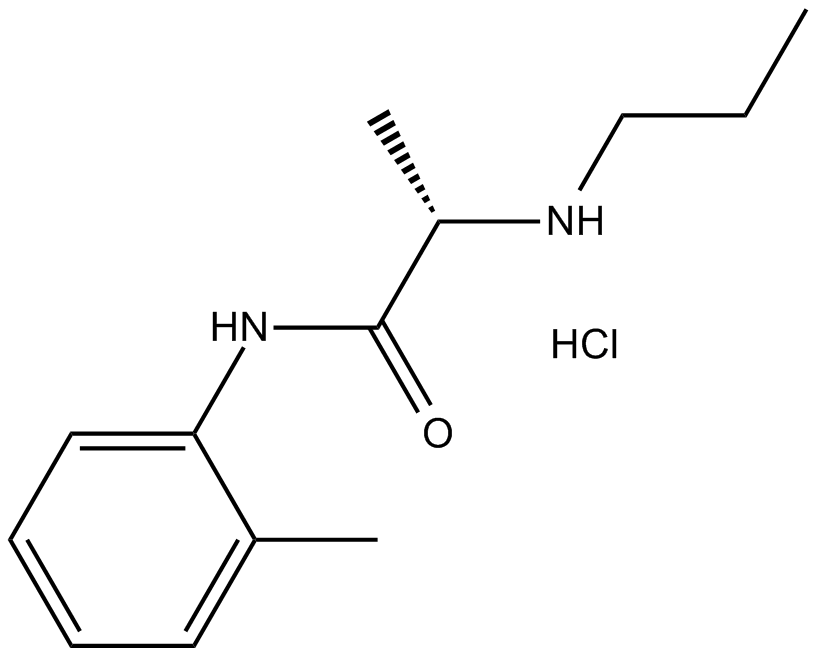Prilocaine hydrochloride |
| Catalog No.GC13162 |
Local anesthetic of the amino amide type
Products are for research use only. Not for human use. We do not sell to patients.

Cas No.: 1786-81-8
Sample solution is provided at 25 µL, 10mM.
Prilocaine hydrochloride is a local anesthetic of the amino amide type.Target: OthersPrilocaine is a local anesthetic of the amino amide type first prepared by Claes Tegner and Nils L fgren. In its injectable form (trade name Citanest), it is often used in dentistry. It is also often combined with lidocaine as a preparation for dermal anesthesia, for treatment of conditions like paresthesia. As it has low cardiac toxicity, it is commonly used for intravenous regional anaesthesia (IVRA). In some patients, a metabolite of prilocaine may cause the unusual side effect of methemoglobinemia, which may be treated with methylene blue. Maximum dosage for dental use: 8.0 mg/kg (2.7 mg/lb), with a maximum dose of 500 mg.Eutectic Mixture of Local Anesthetics (EMLA) containing 5% lidocaine and prilocaine in a cream was found to give effective topical analgesia in normal and diseased skin, making it useful for superficial surgery and various other clinical procedures. To be effective, an adequate amount must be applied under occlusion and at the right time before the intervention.
References:
[1]. Eriksson E. Prilocaine. An experimental study in man of a new local anaesthetic with special regards to efficacy, toxicity and excretion. Acta Chir Scand Suppl. 1966;358:1-82.
[2]. Juhlin L, et al. EMLA: a new topical anesthetic. Adv Dermatol. 1990;5:75-91; discussion 92.
Average Rating: 5 (Based on Reviews and 6 reference(s) in Google Scholar.)
GLPBIO products are for RESEARCH USE ONLY. Please make sure your review or question is research based.
Required fields are marked with *




















